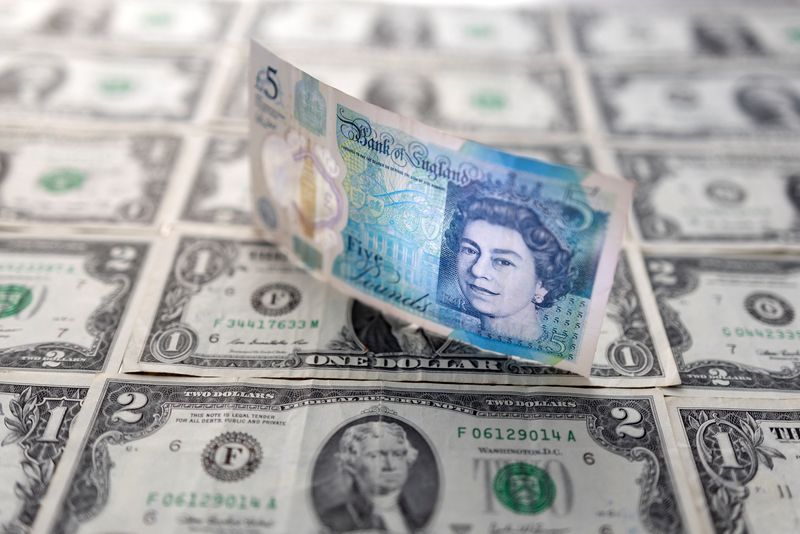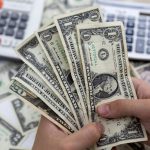SINGAPORE/LONDON (Reuters) -Sterling hit a four-month high on Thursday as comments from Bank of England policymakers and a better-than-forecast GDP data led traders to reduce bets on an August rate cut, while they awaited crucial U.S. inflation data.
The pound advanced 0.16% to $1.2864, its highest level since early March, after BoE chief economist Huw Pill said on Wednesday price pressure remained persistent and Thursday data showed British economic output increased by 0.4% in May, above expectations.
The timing of a rate cut was an “open question”, Pill said. Futures markets now show traders attach a roughly 50/50 chance of the Bank of England cutting rates at its Aug. 1 meeting.
The comments and Thursday’s GDP data were supporting the pound, said Lee Hardman senior FX analyst at MUFG in a note.
“The minutes from the BoE’s last policy meeting in June had indicated that some of the seven MPC members who voted to keep rates on hold thought the decision was finely balanced,” said Hardman.
But “the overall tone of (Pill’s) comments suggested that he is not yet ready to change his vote in favour of a rate cut at the August MPC meeting,” he added.
The pound also firmed to its strongest on the euro in a month, with the common currency at 84.21 pence.
Versus the dollar, the euro was around 0.1% higher at $1.0840
But the main scheduled event of the day – and arguably the week – for currency markets is U.S. inflation data due at 1230 GMT, which will reinforce or challenge market expectations that the Federal Reserve is more likely than not to cut rates in September.
Expectations are for core inflation to have risen 0.2% on a monthly basis in June, putting the annual figure at 3.4%.
“That outcome will obviously build confidence that the FOMC will be able to cut rates fairly soon, so I think a 0.2% (rise) may perhaps push the dollar a bit lower modestly if market pricing for (a) September (cut) increases,” said Carol Kong, a currency strategist at Commonwealth Bank of Australia (OTC:CMWAY).
Fed Chair Jerome Powell said on Wednesday the U.S. central bank will take interest-rate decisions “when and as” they are needed, pushing back on a suggestion that a September rate cut could be seen as a political act ahead of the fall presidential election.
Elsewhere, the New Zealand dollar edged 0.1% higher to $0.6088, finding its footing after the previous session when it fell 0.7% in the wake of the Reserve Bank of New Zealand’s dovish tilt in its monetary policy statement.
The yen continued to be pressured by stark interest rate differentials between the U.S. and Japan, and last stood at 161.59 per dollar, near a 38-year low, though having been fairly placid in the past few weeks.

Many Japanese private banks who met with the Bank of Japan (BOJ)on Tuesday called for the central bank to halve its monthly bond purchases by around 2026, two officials with direct knowledge of the deliberations told Reuters.
The BOJ is expected to lay out a plan on how to taper its huge bond buying at its meeting on July 30-31, as it works gradually towards policy normalisation.
To read the full article, Click Here

